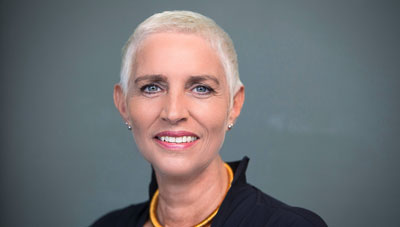Foreword by Wilma Mansveld: Improving before expanding
Posted: 13 February 2015 | | No comments yet
Every day, more than one million people in the Netherlands – out of a population of almost 17 million – rely on trains and railroads to get to work and back home again. This is no small feat considering the complexity of the country’s railway system and the length of its tracks; 7,000km. To give you some idea, that’s from Holland to Siberia, deep into the heart of Russia.


For every kilometre the system counts one switch or crossing. Each day 9,000 trains ride from one place to the next, carrying those one million passengers and 115,000 tonnes of cargo. And every day, the railway system functions well, on average. Exclusively for Global Railway Review, Wilma Mansveld, State Secretary of Infrastructure and the Environment for the Netherlands, explains that to keep the country’s railways and train operation fit for the future, averages are not enough.
Our complex and heavily burdened network is prone to disturbances. Snowfall, storms or signal references that disrupt the system in one place, can quickly cause havoc in a number of other places. It’s one of the drawbacks of such an intricate network; fall-out spreads rapidly, causing bad experiences for travellers.
Improving performance, convenience and traveller experience is key to making our railway system fit for the future; that is not rocket science, but it can still be a complicated jigsaw puzzle. To solve it together with the whole Dutch railway sector, the Dutch government published a new Long Term Railway Policy Agenda in 2014, focusing on improving the reliability of operations, before expanding them.
I believe that real progress is found in looking through the eyes of passengers and shippers. They expect a well-tuned railway on which reliable trains bring passengers and goods comfortably, safely and timely to their desired destinations. And they expect train operations to connect smoothly to other means of transport.
As the principal government official for railways, I recently assigned 10-year public service contracts for passenger transport and a multi-year contract for infrastructure management. Together with the responsible companies, we have agreed to raise the bar when it comes to passenger satisfaction. Each year I set the priorities for the improvements during that year. So next year, the main Dutch railway company – NS – will focus on improving the reliability of its operations, the connection with local and regional public transport and the seating capacity in its trains. In 2015, our infrastructure provider – ProRail – will focus on reducing disturbances and their impact on the whole system, additional and better communications and improving the quality and availability of infrastructure by improving and expanding maintenance.
To enhance the quality and safety of (international) railway transport, the Dutch government will implement the European Rail Traffic Management System (ERTMS) from 2016 onwards. Four sections of the Dutch railway network are already equipped with this new safety system; of which the 160km-long freight-only line between the port of Rotterdam and Germany is one. The 125km-long high-speed line between Amsterdam, Antwerp and Brussels is another. ERTMS both improves safety and the capacity of our railways, due to the possibility of increased cruising speed. The result is a shorter journey, more train connections and thus improved mobility door-to-door.
To realise our ambitions two things are crucial: transparency and cooperation. Both NS as railway undertaking and ProRail as infrastructure manager have agreed to actively and regularly disclose information about their own performances, giving costumers insight in their operations. Passengers and shippers also get a seat at the table, advising both companies on their yearly plans.
Besides cooperation between the railway sector, costumers and stakeholders, we also need more international collaboration. Railway transport doesn’t stop at our borders. That is why the Dutch government is investing in improved railway connections between Dutch border regions and neighbouring regions in Germany and Belgium. Our focus is also on improving European rail freight corridors. The economic stakes for both the Netherlands and our European hinterland are high: quality European rail corridors are indispensible to the transit of tonnes of goods every day.
Our long-term policy agenda and new public service contracts for rail transport and maintenance form a new chapter for public transport in the Netherlands. I see a lot of energy and ambition by all parties involved. With so many public interests at stake, the Dutch railway system is a topic for daily public debate. This may sound like improving public transport is a daunting task. However, I believe it is a beautiful challenge. Making sure every citizen has access to convenient transport from door-to-door is – essentially – the task of connecting worlds and opening new ones. That is a challenge I – together with the Dutch railway sector and European partners – gladly rise to.








